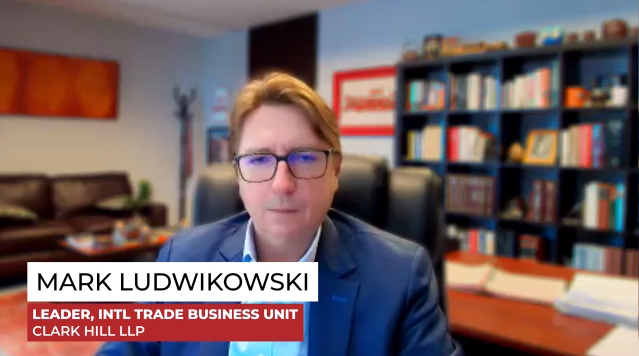
Mark Ludwikowski, leader of the International Trade business unit of the law firm of Clark Hill, explains the various legal justifications that President Trump is making for his wide-ranging tariffs.
President Trump has invoked three different statutes as justification for his tariffs. The first is section 232 of the Trade Expansion Act of 1962, citing national security concerns. Initially, Trump used that law to impose tariffs on steel and aluminum products. He later expanded the action to include automobiles, auto parts and, most recently, wood-based products. Ludwikowski says those tariffs are likely to be upheld by the courts. “I don’t foresee them going anytime soon.”
Trump has also cited section 301 of the Trade Act of 1974 for tariffs imposed on imports from China. Court rulings have upheld his authority under that law, although it could be further appealed to the U.S Supreme Court. Ludwikowski says section 301 allows the President some flexibility for imposing tariffs as a remedy against what the U.S. views to be unfair trade practices.
A third law, the International Emergency Economic Powers Act (IEEPA), is more controversial, given that it doesn’t specifically cite tariffs as a remedy for the President to apply them. The Supreme Court has agreed to review the Trump tariffs imposed under IEEPA, with a decision likely to come early next year.
If the Supreme Court rules against Trump’s use of IEEPA, he could simply shift the tariffs imposed under that law to one of the other statutes, but that typically would require congressional investigations and a report by the U.S. Commerce Department before the tariffs could go into effect. In addition, Ludwikowski says, Trump would need to take a much narrower approach to his tariff regime, citing specific product categories to justify it.
Also to be resolved, he says, is whether importers would be eligible for refunds of tariffs paid under the authority of IEEPA.